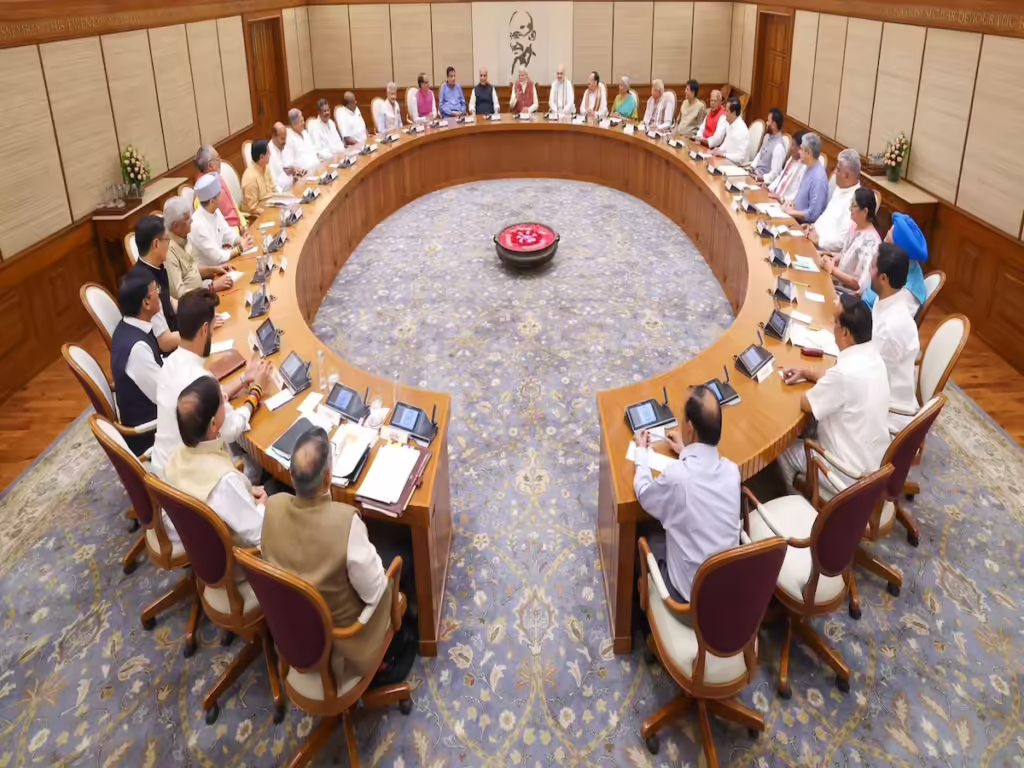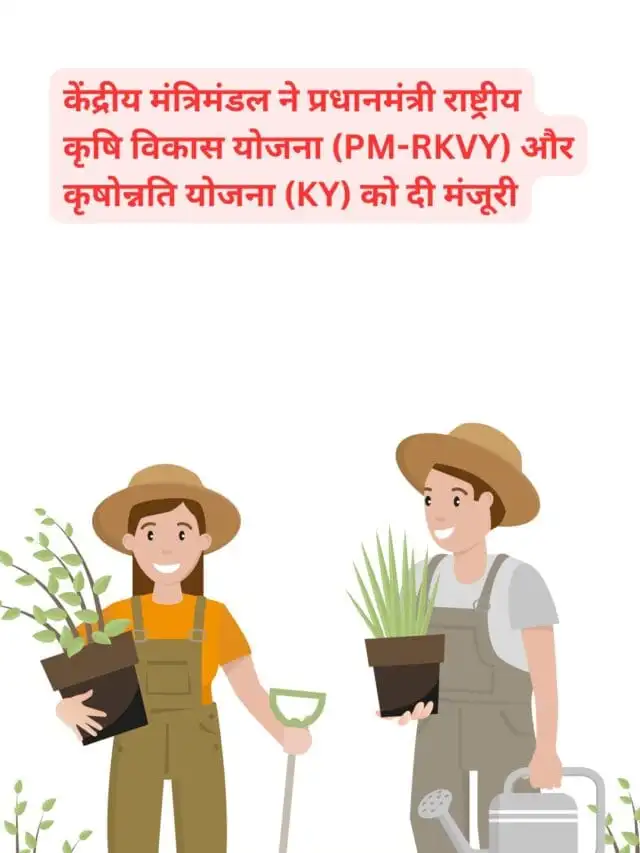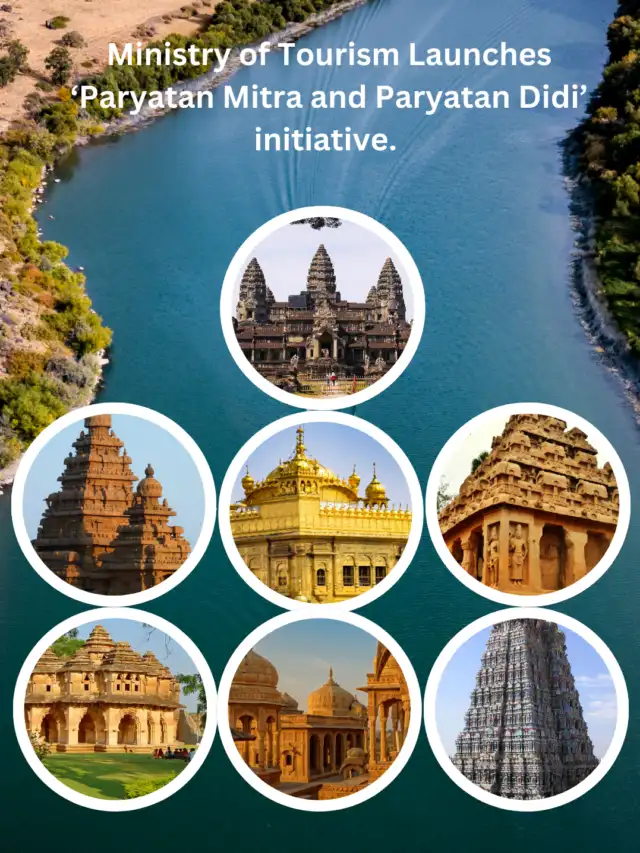
Union cabinet approves Pradhan Mantri Janjatiya Unnat Gram Abhiyan
On September 18, 2024, the Union Cabinet, chaired by Prime Minister Narendra Modi, approved the Pradhan Mantri Janjatiya Unnat Gram Abhiyan, a comprehensive initiative aimed at transforming tribal villages in India. With a massive financial outlay of ₹79,156 crore (Central Share: ₹56,333 crore and State Share: ₹22,823 crore), the mission seeks to address the socio-economic challenges faced by tribal communities, ensuring holistic development across 63,000 tribal-majority villages and Aspirational Districts. This initiative will benefit more than 5 crore tribal people across 549 districts and 2,740 blocks in 30 states and union territories (UTs).
Objectives of Pradhan Mantri Janjatiya Unnat Gram Abhiyan
India’s tribal population, as per the 2011 Census, stands at 10.45 crore, spread across 705 tribal communities, many of whom reside in remote, hard-to-reach areas. The Pradhan Mantri Janjatiya Unnat Gram Abhiyan seeks to bridge critical gaps in infrastructure, health, education, and livelihoods through a saturation approach for tribal villages. This approach aims to provide every eligible household in tribal villages with essential amenities through 25 targeted interventions under 17 different ministries.
The mission builds upon the successes and learnings from the Pradhan Mantri Janjati Adivasi Nyaya Maha Abhiyan (PMJANMAN), which was launched on November 15, 2023 on Janjatiya Gaurav Divas, focusing on the development of Particularly Vulnerable Tribal Groups (PVTGs).
Main goals of the Pradhan Mantri Janjatiya Unnat Gram Abhiyan
1. Developing enabling infrastructure
The mission’s first goal is to provide enabling infrastructure for tribal communities. This involves ensuring access to essential services and infrastructure in every tribal village.
- Housing: Through Pradhan Mantri Awas Yojana (PMAY-Gramin), eligible Scheduled Tribe (ST) households will receive pucca houses, ensuring basic amenities such as piped water under Jal Jeevan Mission and electricity through the Revamped Distribution Sector Scheme (RDSS). Additionally, these households will be covered under Ayushman Bharat for healthcare needs.
- Village Infrastructure: All-weather road connectivity will be established in ST-majority villages through the Pradhan Mantri Gram Sadak Yojana (PMGSY), while Bharat Net will provide internet and mobile connectivity. Health, nutrition, and education infrastructure will be strengthened under schemes like the National Health Mission (NHM), Samagra Shiksha Abhiyan, and Poshan Abhiyan.
2. Promoting economic empowerment
The mission prioritizes the economic empowerment of tribal communities through skill development, entrepreneurship promotion, and support for self-employment.
- Skill Development and Livelihood: Under the Skill India Mission, the program aims to provide training to ST boys and girls after their 10th and 12th standards, enabling them to pursue long-term skill development courses. In addition, support will be provided for agriculture, animal husbandry, and fisheries under the Tribal Multipurpose Marketing Centre (TMMC). These centers will serve as platforms for marketing tribal products, thereby enhancing their economic opportunities.
3. Universal access to quality education
A key objective of the mission is to improve educational outcomes for ST students, ensuring their access to affordable, quality education.
- Increasing Gross Enrolment Ratio (GER): The scheme aims to bring the Gross Enrolment Ratio (GER) in tribal communities to par with national levels. 1,000 hostels will be constructed under the Samagra Shiksha Abhiyan at the district/block level to promote school and higher education enrolment among tribal students. This will also help reduce dropout rates and improve retention in tribal areas.
4. Ensuring healthy lives and dignified ageing
Healthcare access is a critical focus of the mission, aiming to reduce the disparity in health standards between tribal and non-tribal populations.
- Healthcare Facilities: The mission aims to reach national standards for Infant Mortality Rate (IMR), Maternal Mortality Rate (MMR), and immunization coverage. Mobile Medical Units (MMUs) will be deployed in areas where health sub-centers are located more than 10 km away in plains and more than 5 km away in hilly areas.
5. Focus on livelihood for forest right holders (FRA)
Special attention will be given to Forest Rights Act (FRA) Patta holders, with the goal of improving livelihoods and securing forest rights.
- Converging Government Schemes: Through the convergence of schemes under the Ministry of Tribal Affairs, Ministry of Agriculture, Department of Animal Husbandry, and Department of Fisheries, 22 lakh FRA Patta holders will be provided support to maintain and conserve forests. This initiative will also expedite the process of recognizing pending FRA claims and provide sustainable livelihood options for forest-dwelling communities.
The Mission targets in respect of 17 Ministries are as under:
Key features of the Pradhan Mantri Janjatiya Unnat Gram Abhiyan
1. Tribal home stays
To promote tourism and provide alternate livelihood opportunities, 1,000 Tribal Home Stays will be developed under the Swadesh Darshan Scheme. In villages with tourism potential, funding will be provided for the construction or renovation of home stays. Each household will receive up to ₹5 lakh for constructing new rooms and ₹3 lakh for renovation. This initiative will help generate income for tribal families by tapping into the tourism market.
2. Improving tribal residential school infrastructure
The mission also aims to improve the infrastructure of Ashram schools, hostels, and government residential schools in remote tribal areas, aligning them with the standards of PM-Shri Schools. This will help increase enrolment and retention rates among tribal children, providing them with a better learning environment.
3. Sickle cell disease diagnosis and management
Recognizing the high prevalence of Sickle Cell Disease (SCD) in tribal communities, Centers of Competence (CoC) will be established in AIIMS and other premier institutes. These centers will focus on providing accessible and affordable diagnostic and management facilities for SCD, including pre-natal diagnosis to prevent future births with the disease.
4. Tribal multipurpose marketing centres (TMMCs)
100 TMMCs will be set up to promote effective marketing of tribal products. These centers will help improve packaging, branding, and transportation facilities, ensuring that tribal producers receive fair prices for their products. The TMMCs will also serve as platforms for aggregation and value addition, minimizing post-harvest and post-production losses.
Monitoring and Evaluation
The progress of the Pradhan Mantri Janjatiya Unnat Gram Abhiyan will be mapped on the PM Gati Shakti Portal. Each department will monitor its physical and financial progress, and the best-performing districts will be awarded for their achievements. This real-time monitoring will ensure timely implementation of the schemes and promote accountability.
Cooperative federalism and whole of government approach
This mission represents a whole of government approach, with 17 ministries coming together to ensure the holistic development of tribal areas. The mission aligns with cooperative federalism, working closely with state governments to ensure effective implementation. By addressing the critical needs of tribal areas, this initiative aims to bring about comprehensive socio-economic development and contribute to the broader vision of ‘Viksit Bharat 2047’ (Developed
प्रधानमंत्री जनजातीय उन्नत ग्राम अभियान को कैबिनेट की मंजूरी
18 सितंबर, 2024 को प्रधानमंत्री श्री नरेंद्र मोदी की अध्यक्षता में केंद्रीय मंत्रिमंडल ने प्रधानमंत्री जनजातीय उन्नत ग्राम अभियान को मंजूरी दी। इस योजना का उद्देश्य जनजातीय बहुल गांवों और आकांक्षी जिलों में समग्र और सतत विकास सुनिश्चित करना है। ₹79,156 करोड़ (केंद्रीय हिस्सा: ₹56,333 करोड़ और राज्य हिस्सा: ₹22,823 करोड़) के बजट के साथ, यह योजना 63,000 जनजातीय बहुल गांवों को कवर करेगी, जिससे 5 करोड़ से अधिक जनजातीय लोग लाभान्वित होंगे।
प्रधानमंत्री जनजातीय उन्नत ग्राम अभियान के लक्ष्य
भारत में 10.45 करोड़ की जनजातीय आबादी है, जो 705 से अधिक जनजातीय समुदायों में फैली हुई है। यह अभियान जनजातीय गांवों में बुनियादी ढांचे, स्वास्थ्य, शिक्षा और आजीविका के क्षेत्र में महत्वपूर्ण अंतराल को पाटने का काम करेगा। 17 मंत्रालयों के तहत 25 हस्तक्षेपों के माध्यम से योजना का क्रियान्वयन किया जाएगा।
1. बुनियादी ढांचे का विकास
योजना का पहला लक्ष्य जनजातीय गांवों में बुनियादी सुविधाएं प्रदान करना है।
- पक्का मकान: प्रधानमंत्री आवास योजना (ग्रामीण) के तहत पात्र जनजातीय परिवारों को पक्का मकान मिलेगा, जिसमें जल जीवन मिशन के तहत पाइप से पानी और विद्युत वितरण योजना (RDSS) के तहत बिजली की सुविधा होगी। साथ ही, इन परिवारों को आयुष्मान भारत के तहत स्वास्थ्य सेवाएं भी उपलब्ध कराई जाएंगी।
- गांव का बुनियादी ढांचा: प्रधानमंत्री ग्राम सड़क योजना (PMGSY) के तहत सभी मौसमों में सड़क संपर्क, भारत नेट के माध्यम से मोबाइल कनेक्टिविटी, और स्वास्थ्य, पोषण, और शिक्षा के लिए बुनियादी ढांचे का विकास किया जाएगा।
2. आर्थिक सशक्तिकरण
योजना के तहत जनजातीय समुदायों को आर्थिक रूप से सशक्त बनाने के लिए कौशल विकास और स्व-रोजगार को बढ़ावा दिया जाएगा।
- कौशल विकास और आजीविका: स्किल इंडिया मिशन के तहत जनजातीय छात्रों को 10वीं और 12वीं के बाद दीर्घकालिक कौशल प्रशिक्षण प्रदान किया जाएगा। साथ ही, जनजातीय बहुउद्देश्यीय विपणन केंद्रों (TMMC) के माध्यम से कृषि, पशुपालन और मछली पालन के लिए समर्थन प्रदान किया जाएगा।
3. शिक्षा तक पहुंच
योजना का एक प्रमुख उद्देश्य जनजातीय छात्रों के लिए गुणवत्तापूर्ण शिक्षा सुनिश्चित करना है।
- सर्वजन शिक्षा: योजना का लक्ष्य जनजातीय क्षेत्रों में सकल नामांकन अनुपात (GER) को राष्ट्रीय स्तर तक बढ़ाना है। समग्र शिक्षा अभियान के तहत 1,000 छात्रावासों का निर्माण किया जाएगा, जिससे जनजातीय छात्रों को सस्ती और गुणवत्तापूर्ण शिक्षा प्राप्त होगी।
4. स्वास्थ्य और सम्मानजनक वृद्धावस्था
योजना का चौथा उद्देश्य जनजातीय समुदायों के लिए गुणवत्तापूर्ण स्वास्थ्य सेवाओं की पहुंच सुनिश्चित करना है।
- स्वास्थ्य सेवाएं: योजना का लक्ष्य शिशु मृत्यु दर (IMR), मातृ मृत्यु दर (MMR) और टीकाकरण कवरेज के राष्ट्रीय मानकों तक पहुंचना है। जहां स्वास्थ्य उपकेंद्र दूरस्थ क्षेत्रों में स्थित हैं, वहां मोबाइल मेडिकल यूनिट्स (MMUs) को तैनात किया जाएगा।
5. वन अधिकार धारकों के लिए आजीविका
योजना का विशेष ध्यान वन अधिकार अधिनियम (FRA) धारकों पर है, ताकि उनकी आजीविका में सुधार हो सके।
- सरकारी योजनाओं का समन्वय: वन अधिकार धारकों को सशक्त बनाने और उन्हें स्थायी आजीविका प्रदान करने के लिए कृषि, पशुपालन, और मछली पालन के क्षेत्र में विभिन्न सरकारी योजनाओं के लाभ प्रदान किए जाएंगे।
17 मंत्रालयों के संबंध में मिशन के लक्ष्य इस प्रकार हैं:
प्रधानमंत्री जनजातीय उन्नत ग्राम अभियान की विशेषताएं
1. जनजातीय होम स्टे
पर्यटन को बढ़ावा देने और जनजातीय समुदायों के लिए वैकल्पिक आजीविका प्रदान करने के लिए स्वदेश दर्शन योजना के तहत 1,000 जनजातीय होम स्टे विकसित किए जाएंगे। पर्यटन क्षमता वाले गांवों में होम स्टे के निर्माण के लिए प्रत्येक परिवार को ₹5 लाख की सहायता दी जाएगी।
2. जनजातीय आवासीय स्कूलों का उन्नयन
योजना का उद्देश्य दूरस्थ जनजातीय क्षेत्रों में स्थित आश्रम स्कूलों, छात्रावासों, और सरकारी आवासीय विद्यालयों के बुनियादी ढांचे में सुधार करना है।
3. सिकल सेल रोग का निदान और प्रबंधन
सिकल सेल रोग से पीड़ित जनजातीय समुदायों के लिए AIIMS और अन्य प्रमुख संस्थानों में कौशल केंद्र स्थापित किए जाएंगे, जहां इस रोग के निदान और प्रबंधन की सुविधा प्रदान की जाएगी।
4. जनजातीय बहुउद्देश्यीय विपणन केंद्र (TMMC)
100 TMMC जनजातीय उत्पादों के विपणन के लिए स्थापित किए जाएंगे। इन केंद्रों के माध्यम से पैकेजिंग, ब्रांडिंग, और परिवहन सुविधाओं में सुधार किया जाएगा, जिससे जनजातीय उत्पादकों को उनके उत्पादों के लिए उचित मूल्य प्राप्त हो सकेगा।
निगरानी और मूल्यांकन
योजना की प्रगति को PM गति शक्ति पोर्टल पर मैप किया जाएगा, और सर्वश्रेष्ठ प्रदर्शन करने वाले जिलों को पुरस्कार दिया जाएगा। इससे योजना के कार्यान्वयन की निगरानी में पारदर्शिता और जवाबदेही सुनिश्चित होगी।
सहकारी संघवाद और समग्र सरकारी दृष्टिकोण
यह योजना सहकारी संघवाद का एक उत्कृष्ट उदाहरण है, जिसमें 17 मंत्रालय मिलकर जनजातीय क्षेत्रों के समग्र विकास के लिए कार्य करेंगे। यह योजना 2047 तक विकसित भारत के लक्ष्य को प्राप्त करने की दिशा में एक महत्वपूर्ण कदम है, जो भारत के जनजातीय समुदायों के विकास के प्रति सरकार की प्रतिबद्धता को दर्शाती है।









